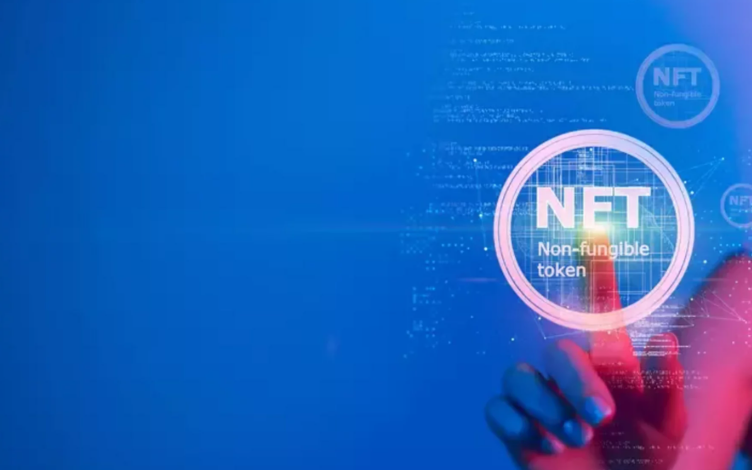Blockchain Beyond Cryptocurrency: Key Applications You Should Know

Blockchain technology is most commonly associated with cryptocurrencies like Bitcoin and Ethereum. However, its potential far exceeds digital currencies. As industries continue to explore innovative solutions, blockchain is emerging as a transformative technology with applications across various sectors, from healthcare to supply chain management and even voting systems. In this article, we’ll explore blockchain’s key applications beyond cryptocurrency and discuss how it’s revolutionizing various industries.
What Is Blockchain Technology?
Before diving into the diverse applications of blockchain, it’s important to understand what blockchain is. At its core, blockchain is a decentralized, distributed ledger system that records transactions across a network of computers. This system is designed to be transparent, secure, and immutable, making it ideal for applications requiring trust and accountability.
Each record, or “block,” contains a list of transactions, and these blocks are linked together in a “chain.” Once a block is added to the chain, it cannot be altered or deleted, making blockchain highly secure and transparent.
Now, let’s take a deeper dive into how blockchain is being used beyond cryptocurrency.
See also: 5G Technology: Revolutionizing Connectivity Across the Globe
1. Supply Chain Management: Improving Transparency and Efficiency
Supply chains are often complex, with many parties involved in the production, transportation, and delivery of goods. This complexity can lead to inefficiencies, fraud, and a lack of transparency. Blockchain technology offers a solution by providing a decentralized ledger that records every step in the supply chain.
How Blockchain Helps:
- Tracking goods: Blockchain allows businesses to track goods in real-time, from their origin to their final destination, ensuring authenticity and reducing fraud.
- Smart contracts: These digital contracts automatically execute once predetermined conditions are met, ensuring transparency and reducing human error.
- Increased trust: Since the blockchain ledger is immutable, all parties can have confidence in the accuracy of the data.
Real-World Example:
Walmart has implemented blockchain to track the origin of food products, improving the speed and accuracy of recalls in case of contamination.
2. Healthcare: Revolutionizing Patient Data Management
Blockchain has significant potential in the healthcare industry, where maintaining secure, accurate, and accessible patient data is paramount. Traditional systems for managing patient data are often fragmented, making it difficult for healthcare providers to access the necessary information when needed.
How Blockchain Helps:
- Secure patient records: Blockchain provides a secure and immutable way to store patient records, ensuring that only authorized personnel can access them.
- Interoperability: Blockchain can enable different healthcare providers to share patient data securely, improving the quality of care.
- Supply chain transparency: Blockchain can be used to track the origin of pharmaceuticals, ensuring that drugs are genuine and reducing the circulation of counterfeit medications.
Real-World Example:
The MedRec project uses blockchain to provide a decentralized solution for managing electronic medical records, ensuring that healthcare professionals can access accurate patient information when needed.
3. Voting Systems: Ensuring Transparency and Security
One of the most important applications of blockchain is in the field of voting. Elections are critical to democracy, but concerns about fraud, vote tampering, and the transparency of voting systems have plagued many countries.
How Blockchain Helps:
- Transparency: Blockchain provides an immutable record of votes, ensuring transparency and reducing the risk of fraud.
- Voter authentication: Blockchain can be used to verify the identity of voters, reducing the likelihood of impersonation.
- Decentralization: Since blockchain is decentralized, there is no central point of failure, making the system more resilient to hacking.
Real-World Example:
In 2020, the state of West Virginia piloted a blockchain-based voting system, allowing voters to cast their ballots securely using their smartphones.
4. Intellectual Property and Copyright Protection
In the world of intellectual property (IP), ownership disputes and the illegal distribution of creative works are common. Blockchain can offer a solution by providing a decentralized and transparent way to record IP rights and licensing agreements.
How Blockchain Helps:
- Tracking ownership: Blockchain enables creators to register their work on a decentralized ledger, providing proof of ownership that is secure and immutable.
- Smart contracts: Creators can use smart contracts to automatically enforce licensing agreements, ensuring they are paid for the use of their work.
- Reducing piracy: Blockchain can be used to track digital assets, ensuring that they are not being copied or distributed without proper authorization.
Real-World Example:
The Open Music Initiative is exploring how blockchain can be used to track music rights and ensure artists receive fair compensation for their work.
5. Financial Services: Beyond Cryptocurrency
While blockchain is widely recognized for its role in cryptocurrency, its impact on traditional financial services is profound. Blockchain can transform how financial institutions operate, improving efficiency, reducing fraud, and increasing accessibility to financial services.
How Blockchain Helps:
- Cross-border payments: Blockchain enables faster and cheaper cross-border payments by eliminating the need for intermediaries like banks.
- Decentralized finance (DeFi): DeFi applications allow users to access financial services such as lending, borrowing, and trading without relying on traditional banks.
- Fraud prevention: Blockchain’s immutable nature makes it difficult for fraudsters to alter records, reducing the risk of fraud in financial transactions.
Real-World Example:
Ripple, a blockchain-based payment protocol, is used by banks and financial institutions to process cross-border payments more efficiently and securely.
6. Real Estate: Streamlining Transactions and Reducing Fraud
Real estate transactions are often slow, costly, and involve a lot of paperwork. Blockchain has the potential to streamline the process, making transactions faster, cheaper, and more transparent.
How Blockchain Helps:
- Smart contracts: Blockchain-powered smart contracts can automate real estate transactions, reducing the need for intermediaries and speeding up the process.
- Property title management: Blockchain can provide a secure and transparent way to record property titles, reducing the risk of fraud and disputes over ownership.
- Tokenization of assets: Blockchain allows for the tokenization of real estate, enabling fractional ownership and making it easier for individuals to invest in properties.
Real-World Example:
Propy, a global real estate marketplace, uses blockchain to enable secure and transparent real estate transactions, allowing buyers and sellers to conduct transactions entirely online.
7. Energy: Optimizing Grid Management and Promoting Sustainability
The energy sector is also exploring blockchain technology to optimize grid management, reduce energy waste, and promote the use of renewable energy sources.
How Blockchain Helps:
- Energy trading: Blockchain can enable peer-to-peer energy trading, allowing individuals and businesses to buy and sell excess renewable energy.
- Grid management: Blockchain can help manage the distribution of energy across the grid more efficiently, reducing waste and ensuring that energy is used where it’s needed most.
- Tracking renewable energy: Blockchain can be used to track the generation and consumption of renewable energy, providing transparency and encouraging more sustainable practices.
Real-World Example:
Power Ledger is a blockchain-based platform that allows users to trade surplus solar energy directly with others, helping to optimize energy consumption and promote renewable energy.
8. Education: Verifying Credentials and Certifications
The education sector is increasingly adopting blockchain to verify credentials and certifications. This innovation ensures that degrees and qualifications are genuine, reducing fraud and making it easier for employers to verify the qualifications of candidates.
How Blockchain Helps:
- Credential verification: Blockchain allows educational institutions to issue diplomas and certificates that can be verified by employers or other institutions.
- Reducing fraud: Blockchain makes it difficult for individuals to falsify educational credentials, ensuring that all qualifications are genuine.
- Student records management: Blockchain can be used to store and manage student records, ensuring that they are secure, accessible, and tamper-proof.
Real-World Example:
The University of Melbourne uses blockchain to issue digital diplomas to graduates, allowing employers to quickly verify the authenticity of qualifications.
9. Identity Management: Enhancing Security and Privacy
Identity theft is a growing concern in the digital age. Blockchain can offer a more secure and private way for individuals to manage their personal information and control who has access to it.
How Blockchain Helps:
- Self-sovereign identity: Blockchain allows individuals to own and control their identity, giving them the power to grant or revoke access to their personal data.
- Secure authentication: Blockchain can be used to create secure, decentralized identity systems that reduce the risk of identity theft.
- Privacy protection: Blockchain ensures that sensitive personal information is stored in a secure, immutable ledger, reducing the risk of data breaches.
Real-World Example:
The Sovrin Foundation is working on a blockchain-based identity platform that allows individuals to manage their own digital identities securely.
Conclusion: The Future of Blockchain Beyond Cryptocurrency
Blockchain is far more than just the backbone of cryptocurrencies. Its applications are broad and varied, offering potential solutions to problems across multiple industries. From supply chain transparency and healthcare data management to secure voting systems and intellectual property protection, blockchain is revolutionizing the way we think about data, transactions, and trust.
As businesses and governments continue to explore blockchain’s potential, it is likely that we will see even more innovative applications emerge, further demonstrating the versatility and power of this transformative technology.
Frequently Asked Questions (FAQs)
1. What is blockchain technology?
Blockchain is a decentralized and distributed ledger that records transactions in a secure and transparent manner. It’s known for its immutability and is commonly used in cryptocurrency but has applications beyond that.
2. How does blockchain improve supply chain management?
Blockchain enhances supply chain transparency by allowing businesses to track goods in real time. It also ensures that data cannot be altered, making it easier to identify fraud and inefficiencies.
3. Can blockchain be used in healthcare?
Yes, blockchain can be used to securely store patient records, track pharmaceuticals, and improve the interoperability between healthcare providers.
4. How does blockchain make voting more secure?
Blockchain ensures that votes are transparent, immutable, and securely recorded, reducing the chances of fraud and increasing voter confidence.
5. What are smart contracts?
Smart contracts are self-executing contracts with the terms of the agreement directly written into code. They automatically execute when specific conditions are met, improving efficiency and trust.
6. How can blockchain be used in education?
Blockchain can be used to verify academic credentials, ensuring that degrees and certifications are genuine and reducing the chances of fraud.



